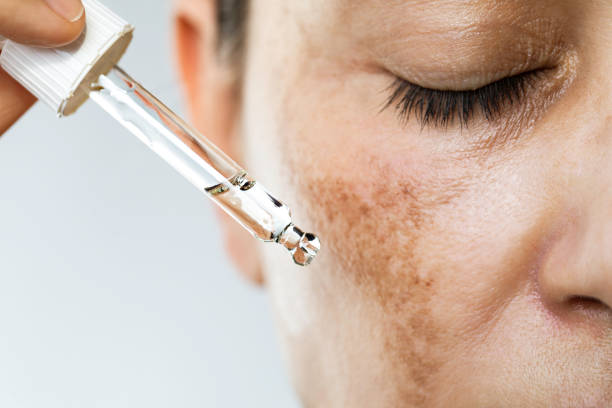- Perioral winkles
- Dynamic lines and wrinkles between brows
- Hooded eyelids
- Skin texture
AVERAGE DOWNTIME: Neurotoxin injectable treatments typically require no downtime, allowing patients to resume most normal activities immediately after the procedure. However, some temporary side effects, such as bruising and/or redness at the injection sites, may occur. It is essential to consult with a trusted practitioner prior to treatment to understand potential risks, discuss expectations, and receive personalized guidance on post-procedure care.
BOTOX OVERVIEW
WHAT TO KNOW ABOUT BOTOX AND OTHER NEUROTOXIN INJECTABLES?
Every movement a body makes is triggered by a nerve cell that signals a muscle to contact. Neurotoxin treatments such as Botox injections temporarily inhibit these nerve cells. The resulting diminished movement allows wrinkles and lines in the skin to soften and often disappear.
Neurotoxins are administered using a fine-gauge needle injected directly into the targeted muscle. The onset of muscle movement inhibition varies depending on factors such as the specific formulation, dosage, and the individual's physiology. Visible results typically begin to appear within 2 to 5 days but may take up to two weeks to fully develop.
BOTOX THERAPY FAQS
What are the benefits of Botox?
Botox injections utilize a purified toxin to temporarily block muscle activity. These injections are widely used to smooth facial wrinkles and lines but also have medical applications, such as treating neck spasms, excessive sweating, overactive bladder, lazy eye, and even preventing migraines.
What is Botox?
Neurotoxin injections, like Botox, involve delivering a small amount of botulinum toxin into muscle tissue to block neural signals that cause muscle contractions. By reducing muscle movement, these injections prevent the formation of new lines and wrinkles while softening existing ones. First noted for aesthetic benefits in 1989, Botox gained FDA approval in 2002 for smoothing glabellar wrinkles (the vertical lines between the eyebrows). Today, neurotoxins are used in over 50 therapeutic and cosmetic applications, including preventing migraines and reducing excessive saliva production.
What does Botox do?
Neurotoxins, such as Botox, work by blocking neural signals that enable muscle contractions. Once the targeted muscle is inhibited, the wrinkles caused by repetitive movements gradually soften and often disappear.
How long does Botox last?
The longevity of a neurotoxin treatment such as Botox is influenced by factors such as the injection site, the individual's metabolic rate, the dosage administered, and the brand of neurotoxin used. New nerve connections to the muscle typically begin to restore movement within 3-4 months, while the body metabolizes the neurotoxin over a period that can extend to 6 months. Due to these variations, most physicians recommend neurotoxin treatments every 3-4 months to maintain optimal results.
For optimal results, consider incorporating the Skin Trusted LED Beauty Mask into your routine. The mask’s targeted wavelengths can further support skin rejuvenation, promoting collagen production and enhancing the effects of Botox. Use the mask as directed to improve overall skin clarity and radiance.
Is Botox safe?
All neurotoxins contain non-human proteins, which pose a small risk of allergic reactions. Such reactions typically manifest within one week of treatment and may take several months to resolve. However, these adverse events are rare. For candidates who qualify for neurotoxin treatment and receive it from an experienced professional, the likelihood of complications is very low. Botox, in particular, has been used widely for over 30 years, demonstrating a strong track record of safety and efficacy with comparatively few complications.
*Always consult your physician before undergoing any procedure
**Follow all product use instructions and warnings
***If irritation occurs, discontinue use; if irritation persists, consult your physician



